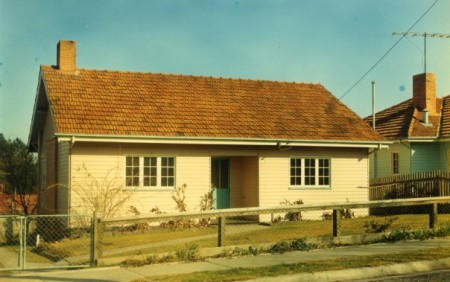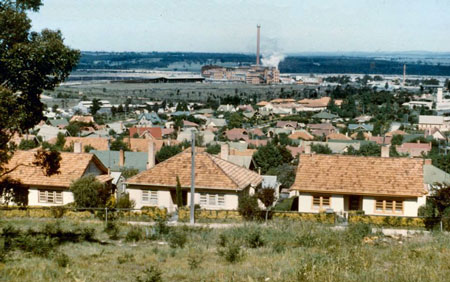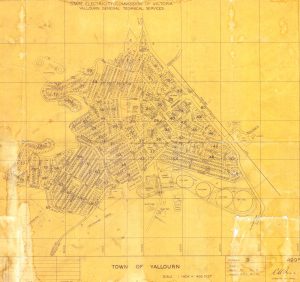YALLOURN HISTORY
Did you live in Yallourn? If so, please click here and partake in our SURVEY.
Also, we are trying to create a complete list of all services/shops/clubs etc in Yallourn. Please click here to view the list to date and advise Julie on email julie@yallourn.org with any additions or alterations.
Yallourn was a company town in Victoria built between the 1920s and the 1950s to house employees of the State Electrical Commission of Victoria, who operated the nearby Yallourn Power Station complex. However, expansion of the adjacent open cut brown coal mine led to the closure and removal of the town in the 1980s.
The town was planned by A.R. La Gerche, the State Electricity Commisions Architect. The design of Yallourn incorporated lessons learnt from the early UK garden cities of Welwyn Garden City and Letchworth Garden City inspired by Ebenezer Howard. Walter Burley Griffin also drew on similar sources for his designs.
The design of Yallourn established a formal central square adjacent to the shopping area and a formal Broadway bounded by parks between the shopping area and railway station. The whole town area was surrounded by a green belt varying between native vegetation, open parkland and sporting and recreational complexes.
The majority of the land and buildings, with the exception of the churches and several minor properties, was owned by the State Electricity Commission of Victoria (S.E.C.V.) Residents were charged below market rentals and the S.E.C.V. adopted the role of paternalistic landlord in addition to its role as employer to the majority of the towns income earners. The conflicts this created caused continuing concern throughout the life of the town. For the majority of the towns life, citizen involvement was limited, residents being represented in their dealings with the S.E.C.V. by a Town Advisory Council.


Houses within the town were constructed to a limited number of designs but these were varied by differing external detailing and surface finishes. A brick and tile manufacturing plant was built near the town and produced a characteristic terracotta roofing tile which was used to clad most homes. The pitch of the roof structure and overhanging eaves remained similar throughout the town, providing a common theme without the sameness characteristic of English garden city developments.
The homes were placed on large plots, typically of 1000 m2, the design brief from General Sir John Monash, the initial S.E.C.V. chairman requiring that each plot should have sufficient land to permit the tenant to keep a horse and a garden
The town boasted outstanding public facilities many years in advance of similar rural or suburban communities of similar size, the majority funded by the S.E.C.V. A close community spirit developed within the town, in part through enthusiastic usage of the excellent facilities.
At its peak, the towns population reached 5000, however the town was removed in the early 1980s so that the rich underlying brown coal reserves could be used for the Yallourn W Power Station. Many of the people who were relocated from Yallourn built homes in Moe, Morwell, Newborough, Traralgon, Yallourn North and other surrounding towns in the Latrobe Valley.
The majority of the houses from the town were removed, either to these nearby towns, or on occasions moved further afield. The timber framed buildings were reclad, although most retained their characteristic Yallourn tiled roof. The S.E.C.V. developed some properties, particularly in small developments in nearby Newborough where Yallourn houses were removed and samples of the conversions that were possible were showcased. These transplanted Yallourn homes remain popular with former Yallourn residents.
For more photos, visit www.virtualyallourn.com and if you would like to include any of your photos, register and follow the prompts.
If you can recognize the addresses of any of the last 8 houses, please email Julie@yallourn.org.

